107 staggering statistics that show the power of loyalty programs in 2024

Loyalty programs have taken over retail. Discover 107 staggering loyalty program stats that show the importance of loyalty, explain the growth of loyalty programs, and reveal what makes and breaks customer loyalty. Plus, get statistics on loyalty program trends and learn what loyalty program owners are planning for the future of their programs.
More than 90% of companies now have some form of loyalty program. Google any brand along with the words “loyalty program”, “rewards program”, or “membership”, and 9 times out of 10 you’ll get a hit.
McDonald’s, Walmart, Disney, Amazon, Costco, The Home Depot, Target, Best Buy, Nike, adidas—the list goes on and on.
So what’s all the loyalty program fuss about? How do loyalty programs work? How much do loyalty programs increase sales? And what factors make or break customer loyalty in ecommerce?
The answers to these questions can be hard to find. So we’ve scoured the web for you and gathered 107 of the most impressive, surprising, and important customer loyalty program statistics.
Get actionable loyalty program data from program owners and customers to uncover loyalty program trends, the
the latest customer preferences and brand loyalty statistics, and stories of success from some of the biggest global brands.
Table of contents
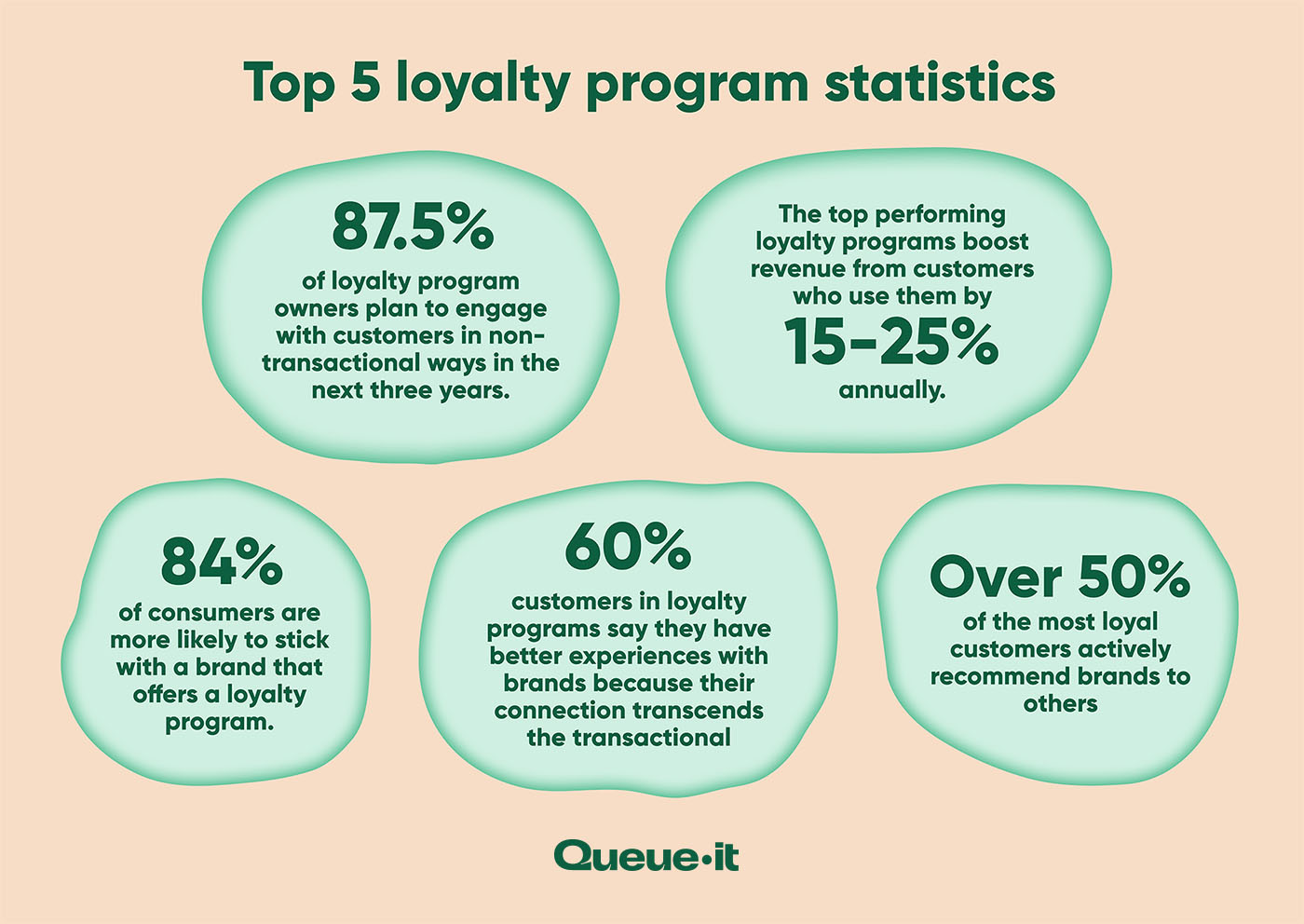
- 65% of a company’s revenue comes from the repeat business of existing customers.
- It’s 5-25x more expensive to acquire a new customer than to keep an existing one.
- 77% of consumers say they've remained loyal to a specific brand for 10 years or more.
- You have a 60-70% chance of selling to an existing customer, versus a 5-20% chance of selling to a new prospect.
- 57% of consumers spend more on brands or providers to which they are loyal.
- A 5% increase in customer retention correlates with a 25% increase in profit.
- Three in four consumers consider trust pivotal in their choice of stores.
RELATED: Ecommerce Loyalty Programs: How to Keep Customers Coming Back for More
- 85% say loyalty programs make them more likely to continue to shop with brands.
- 73% say they modify the amount they spend to maximize loyalty program benefits.
- 81% of loyalty program owners said their program was helpful during the economic downturn.
- 90% of loyalty program owners reported positive ROI, with the average ROI being 4.8x.
- The average annual spend of members who redeem rewards is 3.1x that of members who don’t.
- Members of loyalty programs generate 12-18% more incremental revenue growth per year than non-members.
- The top performing loyalty programs boost revenue from customers who use them by 15-25% annually.
- 37% of consumers will spend more money with brands with which they have a retail subscription, as will 28% of consumers belonging to membership programs, and 27% of loyalty program members.
- 95% of consumers with retail subscriptions who feel close to brands say they will purchase more products from them, as do 95% of consumers who participate in loyalty programs who feel close to those brands.
- Over 83% of consumers say belonging to a loyalty program influences their decision to buy again from a brand.
- 75% of consumers in loyalty programs will buy more products from the companies they partner with.
- 77% of consumers with retail subscriptions buy more products from the brands they have relationships with.
- 84% of consumers say they’re more likely to stick with a brand that offers a loyalty program.
- 66% of consumers say the ability to earn rewards changes their spending behavior.
- 68% of customers in loyalty programs with brands feel the brands better understand their buying preferences.
- Over 60% of loyalty programs make most shoppers more loyal to a brand.
- 79% of customers say they’re more likely to recommend brands with good loyalty programs.
- 90% of consumers who believe companies understand their buying preferences are likely to purchase more products from them.
- 63% of customers with retail subscriptions say they are interested in joining the brand’s loyalty program, and 47% are interested in obtaining a membership.
RELATED: Reward Loyal Customers with Invite-only Waiting Rooms
- More than 90% of companies have some form of loyalty program.
- The customer loyalty management market is valued at over 5.5 billion U.S. dollars and is expected to surpass $24 billion by the end of 2028.
- The average person now has 19 memberships, 9 of which are active.
- Customers who highly trust a brand are 88% more likely to buy from that brand again.
- 62% of customers will shop almost exclusively from trusted brands.
- Customers are 3.8x more likely to spend more on brands they consider highly reliable.
- 79% of consumers have established some form of relationship with the brands they purchase from—either a membership, retail subscription or loyalty program—and 17% of consumers have all three types.
- 77% of consumers now retract their loyalty more quickly than they did three years ago.
- 61% of consumers switched some or all of their business from one brand or provider to another in the last year.
RELATED: 13 Successful & Innovative Loyalty Program Examples
- Access to deals, discounts or free products are consumers’ top priorities for joining loyalty programs.
- Customers want loyalty programs that are: easy to use (53% of respondents), offer great discounts (39%), and easy to understand (37%).
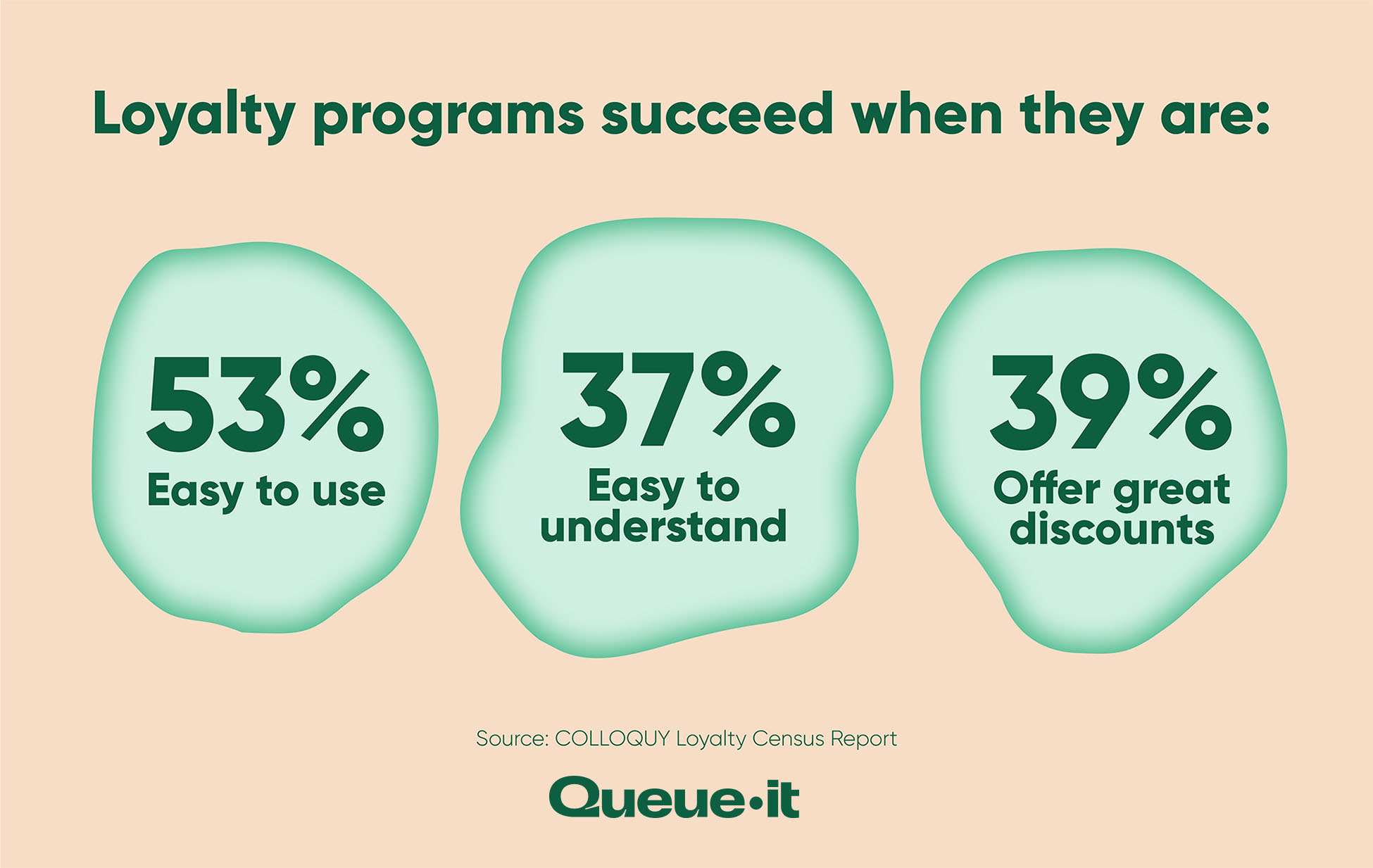
- 79% of customers said being able to unlock exclusive benefits made them loyal.
- 78% of loyalty program owners think diverse reward redemption options have a positive impact on customer retention and satisfaction.
- Access to higher-quality items is the biggest driver of retail subscriptions. 12% of all retail subscribers use subscription services to get high-quality products they can’t find anywhere else.
- A massive 73% of consumers say free shipping greatly impacts their decision to purchase.
- Aside from free shipping and discounts (benefits that cost retailers money), the most important loyalty program benefits for customers are:
- Early access to sales (60.1%).
- Early access to new products (50.8%).
- Tailored recommendations (38.9%).
RELATED: How to Use Scarcity Marketing & Product Drops for Black Friday Success
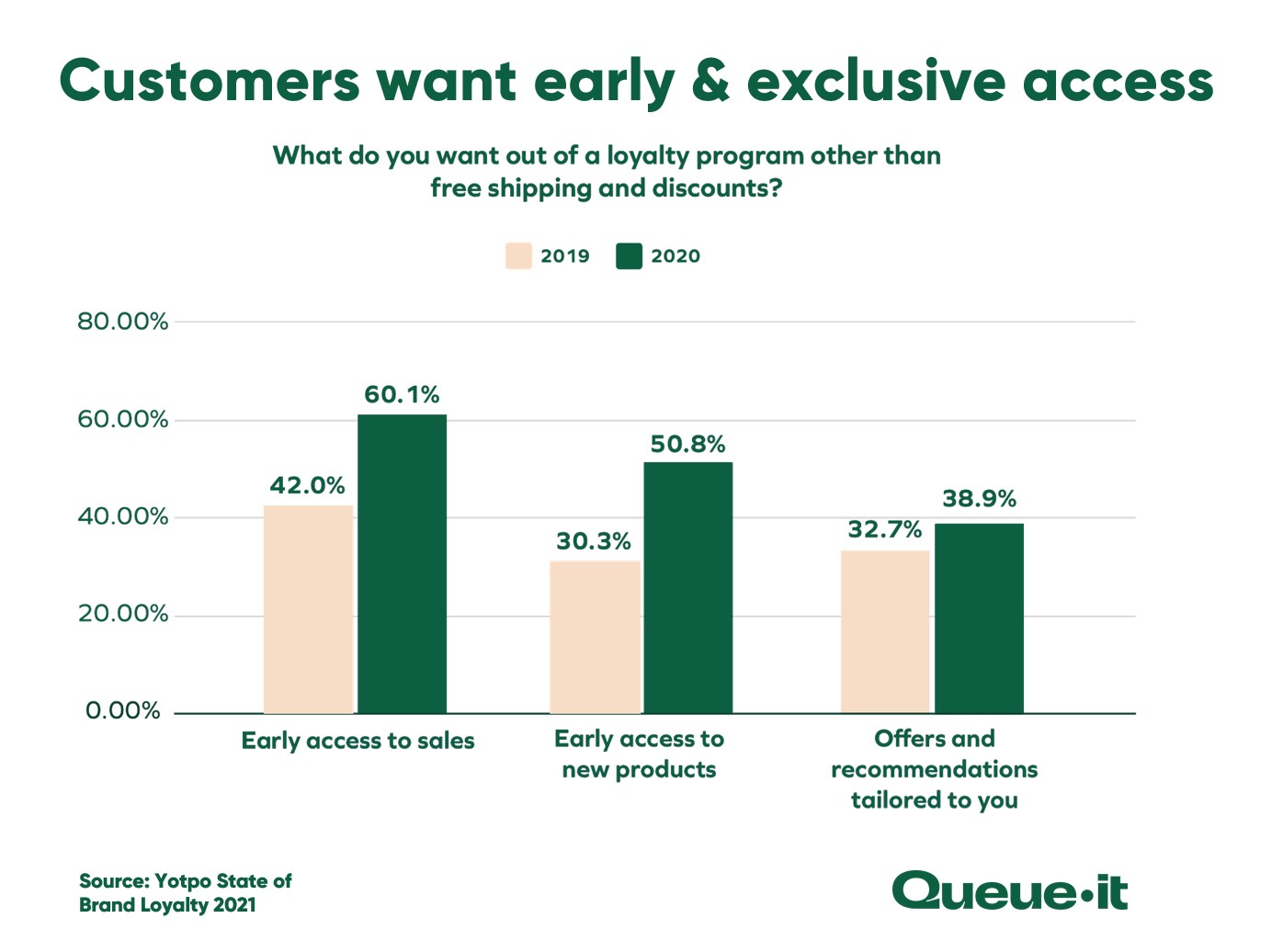
- 91% of America's best apparel loyalty programs offer early or exclusive access to sales and new products.
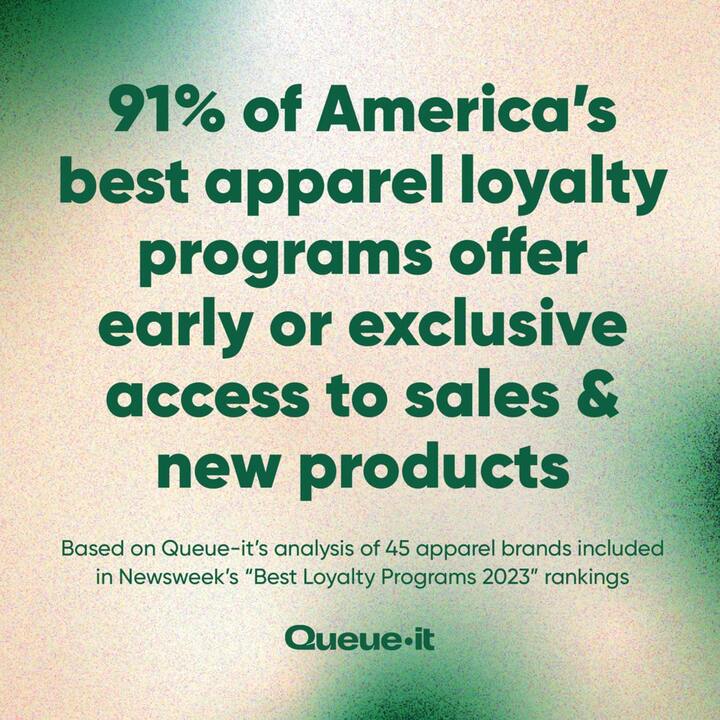
- 80% of consumers say they’re more likely to do business with a company that offers personalized experiences.
- 65% of shoppers say they’d share their data for value-adding personalization.
- 49% of customers reported they’ve made impulse purchases after receiving personalized recommendations.
- 40% of consumers say they're likely to spend more when encountering highly personalized experiences.
- 63% of U.S. online adults and 71% of Italian online adults are willing to share personal information with companies for perks like cash rewards, loyalty program points, early access to new products, and other value.
RELATED: Boost Your Ecommerce Customer Experience with These 9 CX Tips & Tricks
- 6 out of 10 consumers involved in loyalty programs have more positive experiences with these brands because they believe their connection transcends the transactional.
- 72% of customers consider loyalty programs part of their relationship with brands.
- Customers with an emotional relationship with a brand have a 306% higher lifetime value.
- Customers with an emotional relationship with a brand are 71% more likely to recommend the brand to others.
- Compared to a “subscription”, members are 3x more likely to consider a “membership” a community, 1.6x more likely to believe memberships reward their commitments, and 1.5% more likely to believe they get access to perks and benefits.
- 69% of consumers will renew a fee-based plan when they consider it a membership, compared to 58% for those who consider it a subscription.
- 68% of consumers said they’d join a customer loyalty program for brands they like.
- 56% of consumers are willing to spend more with a brand they like even if cheaper options exist.
- 95% of customers say trusting a company increases their loyalty.
- 83% of consumers reported trustworthiness being the emotional factor that’s most aligned with their favorite brands.
- Fairness accounts for 80% of the variance of trust in online retailers.
- Fairness accounts for 56% of the variance of loyalty to online retailers.
- Brands that offer positive experiences receive three times more word-of-mouth marketing than brands that offer dull experiences.
- 88% of loyalty program owners think micro-targeting has a positive impact on customer retention and satisfaction.
- More than half of the most loyal customers actively recommend brands to others.
- 14% of the most loyal customers express their loyalty by publicly endorsing or defending the company via social media.
RELATED: Customer Loyalty in Ecommerce: The Surprising Benefits of Fairness
- 63% of respondents agree they are more likely to do business with brands/companies whose purpose aligns with their values.
- 60% of consumers rate sustainability as an important purchase criterion.
- 34% of consumers say they’ll pay more for sustainable products and services.
- 39% of Gen Z and 42% of millennials say they’d pay a price premium for sustainability.
- When a brand is aligned with a customer’s values, that customer is:
- 3.4x as likely to recommend your brand
- 9.8x as likely to go out of their way to do business with your brand
- 9.9x as likely to spend more with your brand
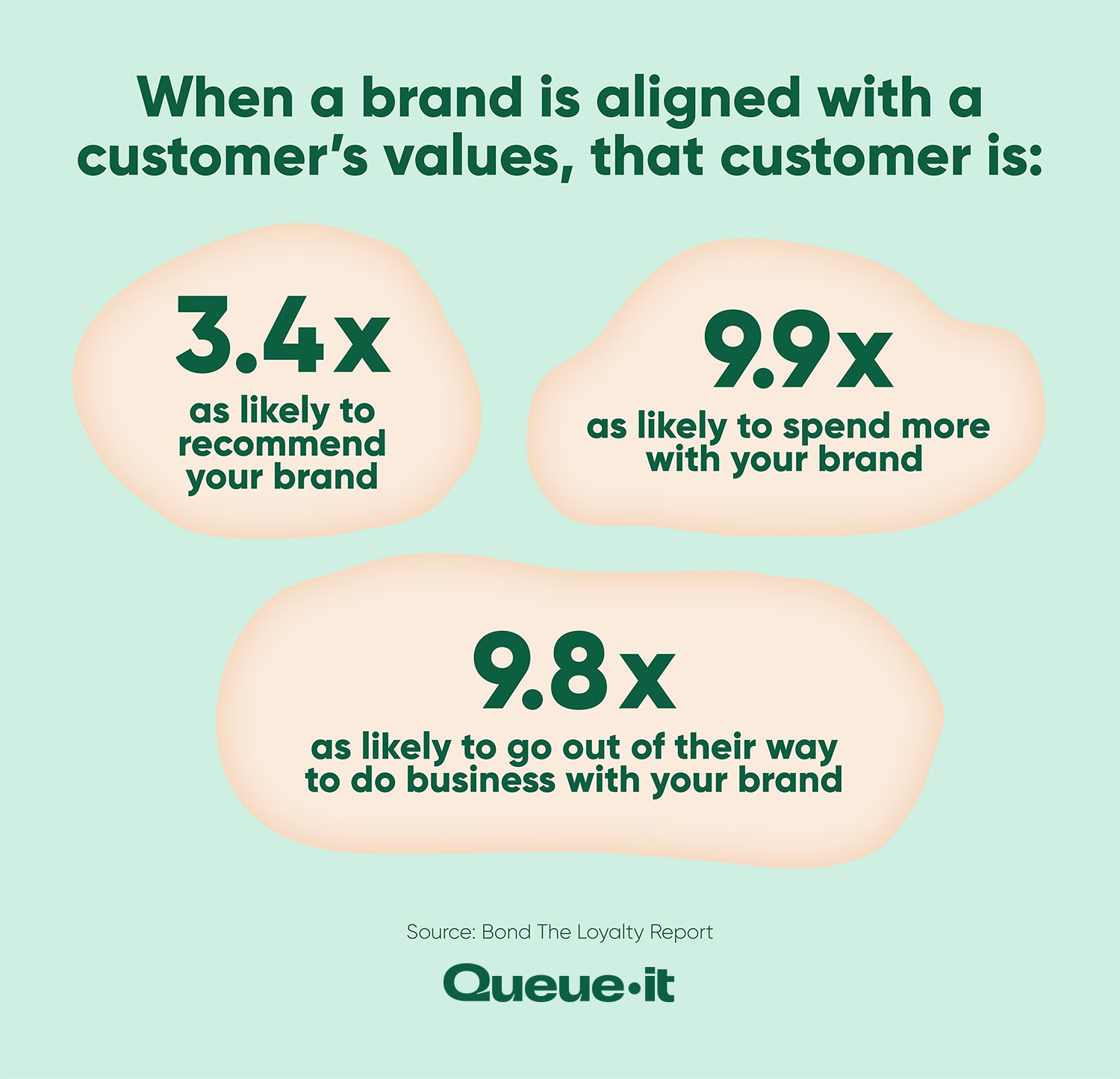
- 1 in 3 customers will leave a brand they love after just one bad experience.
- 59% of U.S. customers say they’d completely abandon a company they love after several negative interactions.
- 57% of customers won’t recommend a business with a poorly designed website on mobile.
- 50% of customers will stop visiting a site that isn’t mobile-friendly, even if they like the business.
- 84% of online shoppers would say goodbye to a retailer after a bad returns experience.
- 51% of customers reported that having to pay for returns would prevent them from making a purchase.
- 46% of consumers say they’ll abandon a brand if employees aren’t knowledgeable.
- Retail subscription providers could lose as much as $2.2 billion per month by failing to offer a better subscription experience. Top performers, regardless of size, offer services such as refunds to build subscriber trust.
- Only 21% of Americans “strongly agree” that loyalty program reps make them feel special or recognized.
- Only 29% of Americans “strongly agree” that they get relevant communications from loyalty programs.
RELATED: The Cost of Downtime: IT Outages, Brownouts & Your Bottom Line
- 90% of companies with a loyalty program plan to revamp it in the next three years.
- 65% of companies want to replatform and revamp their loyalty program.
- 60% of loyalty program owners have made significant changes to their program in the past two years.
- 64% of those who made changes are satisfied with their loyalty program, compared to 43% satisfaction among those who hadn’t made changes.
- The average annual activity rate across loyalty programs is 59%—meaning more than half of all loyalty program members have made a purchase in the past year.
- Loyalty program owners said an average of 50% of rewards are redeemed.
- An average of 27% of marketing budgets are allocated to customer loyalty and CRM.
- 80% of loyalty program owners are likely or very likely to revamp their loyalty program in the next three years.
- 80% of loyalty program owners plan to increase or significantly increase their investments in customer loyalty over the next three years.
- 87.5% of loyalty program owners plan to engage with customers in non-transactional ways in the next three years.
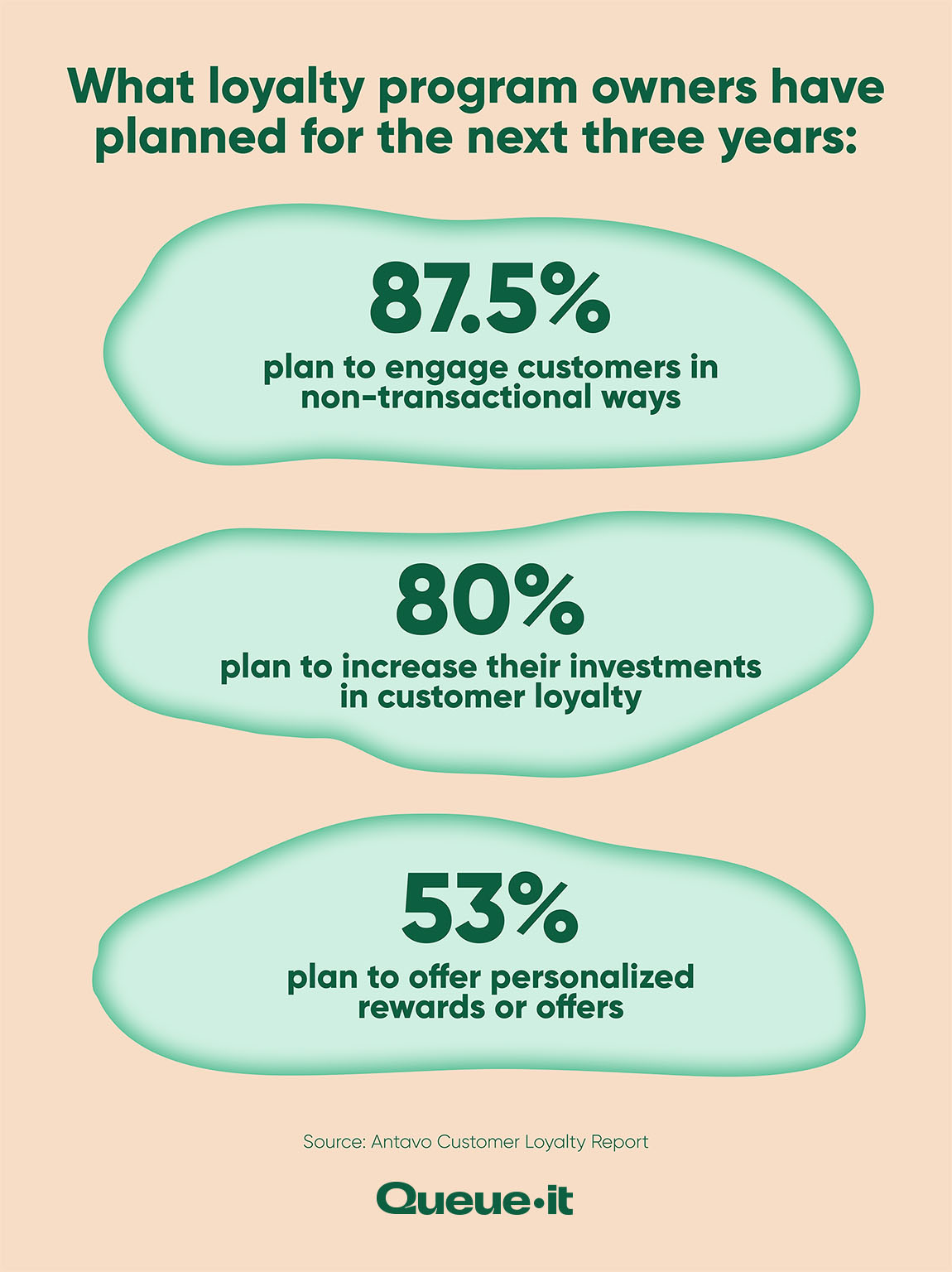
- 37% of loyalty program owners say they use some form of personalized rewards or offers.
- 53% of loyalty program owners say they plan to offer personalized rewards or offers in the next three years.
- 63% of loyalty program owners are satisfied or very satisfied with their programs, claiming it contributes to sales, delivers ROI, and is popular among customers.
- 22% of companies offer a loyalty program with some kind of premium element.
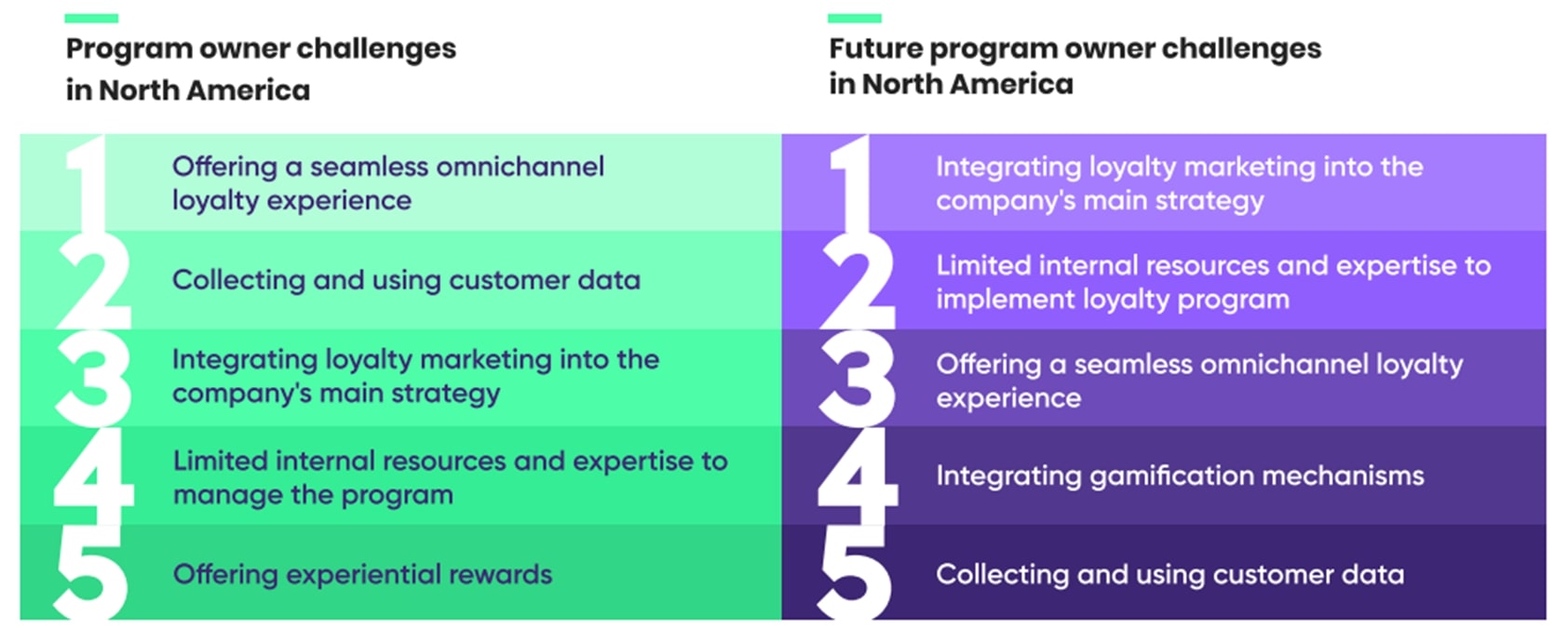
Source: Antavo North America Customer Loyalty Report 2022
- Amazon Prime members spend more than double that of non-member Amazon customers.
- Walmart+ members spend an average of $79 per online visit, compared to $62 for non-members.
- Walmart+ members also shopped an average of 11 more times per year (29 visits) compared with non-members (18).
- Princess Polly drives 4x ROI through their loyalty program.
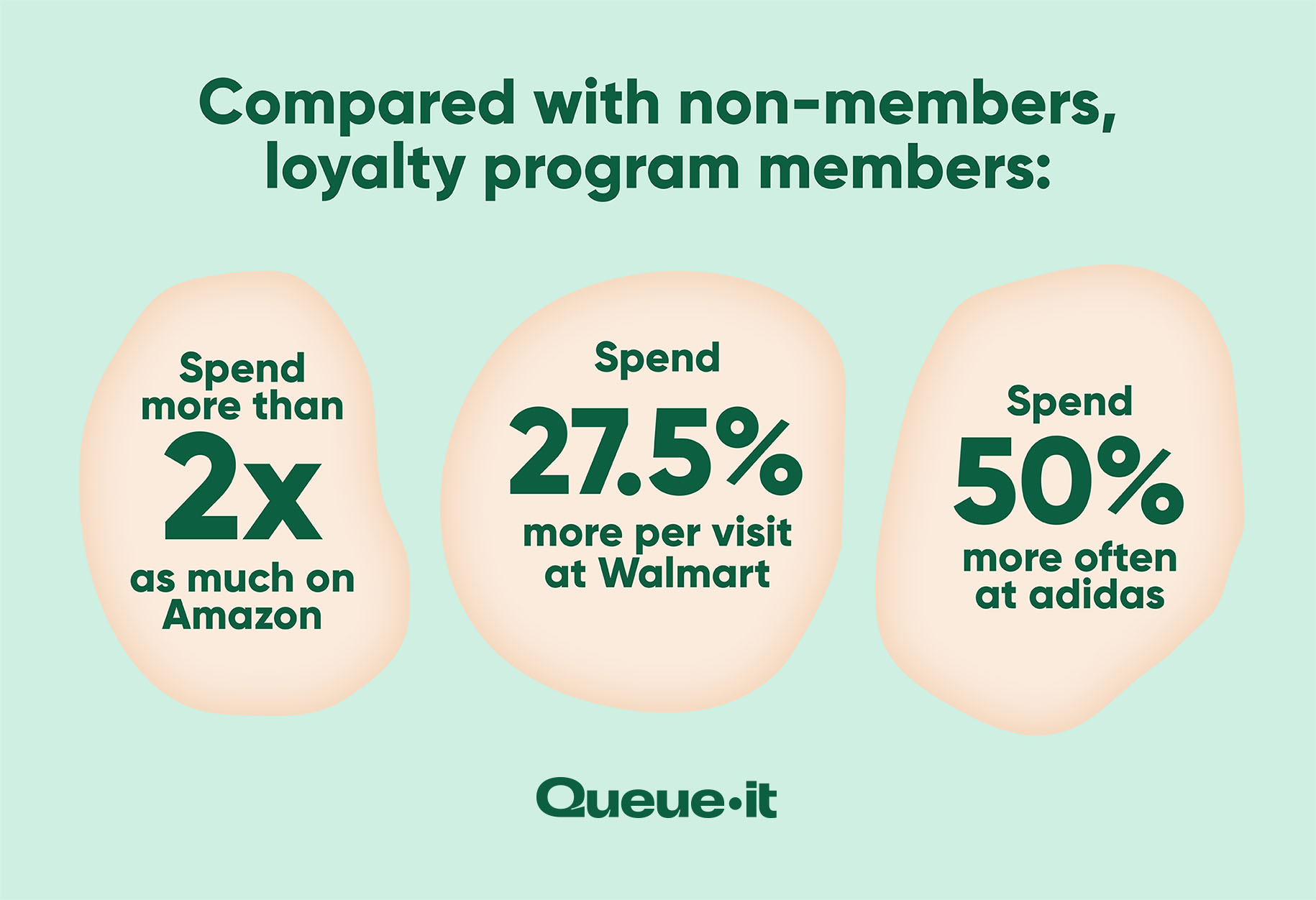
- Adidas adiClub members buy 50% more often than non-members.
- Adidas adiClub members’ lifetime value is double that of non-members.
- American Airlines’ AAdvantage loyalty program is worth over $20 billion—more than triple the valuation of the airline.
- Starbucks Rewards (Starbucks' loyalty program) now represents 53% of all spend in U.S. Starbucks stores.
- After The North Face released its revamped XPLR loyalty program, traffic to the landing page increased 54% YoY.
- Lululemon's loyalty program got nine million membership sign-ups in five months.
- Over 30% of lululemon members took advantage of at least one benefit in that five month period.
- Members make up 80% of Sephora's total sales.
- H&M's loyalty program grew 71% YoY in 2021, reaching over 120 million members.
- Since IKEA's revamp of its loyalty program, the share of sales from members has increased to 58% of total sales.
(This blog has been updated since it was originally written in 2023).